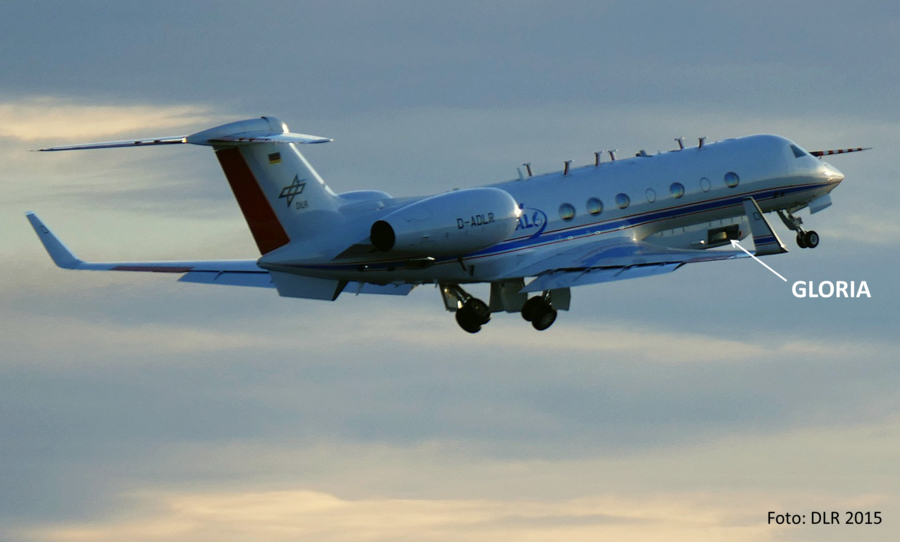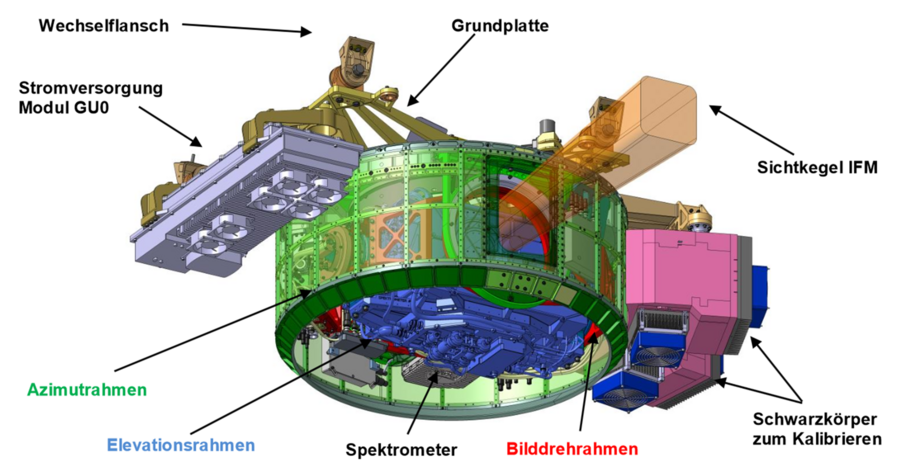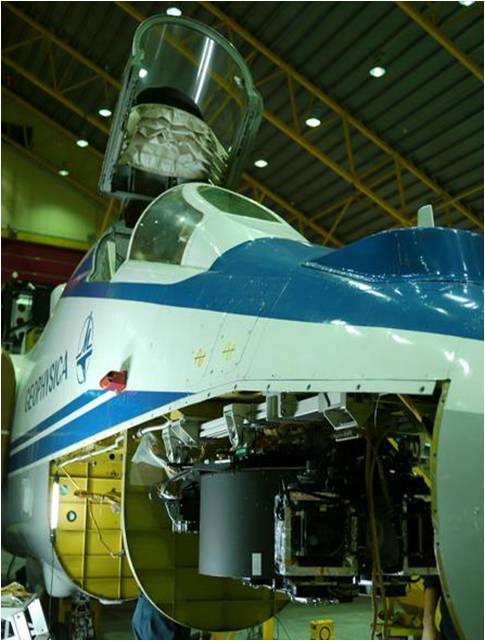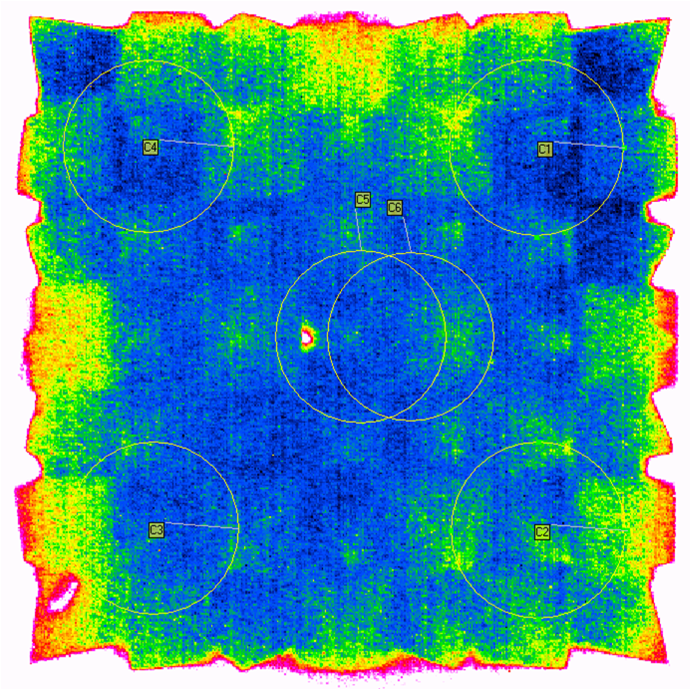GLORIA-BB - Two Blackbodies for Infrared Interferometer Calibration
Gimballed Limb Observer for Radiance Imaging of the Atmosphere
GLORIA (Gimballed Limb Observer for Radiance Imaging of the Atmosphere) is a joint project of Research Center Juelich and Karlsruher Institute of Technology, Germany in cooperation with the Institute for Atmospheric and Environmental Research at the University of Wuppertal.
GLORIA is an airborne imaging Fourier Transform Spectrometer (FTS) deployed in the belly pod of the new research aircraft HALO, as well as on board the high-flying Russian research plane M55-Geophysica. The instrument provides detailed pictures of spatial structures in the Upper Troposphere/Lower Stratosphere (UTLS) region, which plays a crucial role in the climate system.
Trace gas distributions and dynamical processes are observed by GLORIA with an unprecedented spatial resolution. To achieve its objectives, GLORIA uses a two-dimensional detector array for detailed infrared limb observations in emission. The detector array consists of 128 x 128 single detectors providing over 16000 simultaneous limb views. Moderate spectral resolution is achieved by utilization of a Michelson FTS, which allows for measurements of atmospheric temperature fields, cloud parameters, aerosols, water vapor, ozone, and about ten other trace species.
Radiometric Calibation of the GLORIA Infrared Interferometer
For the retrieval of trace gas concentrations, the measured spectra need to be radiometrically calibrated with high accuracy (2%). This will be achieved by a two point calibration using two well-defined radiance sources (blackbodies BB-C and BB-H) at different temperatures. The department of Atmospheric Physics at the University of Wuppertal designs, builds and tests the GLORIA calibation sources.
The optical surface of a GBB (GLORIA BlackBody) (126mm x 126mm) comprises a pyramid field of 49 single spires, which is temperature-controlled by a cooler consisting of 4 times 2 Peltier elements. Temperature will be measured at specific pyramids using platinum resistors. The spires are varnished with NEXTEL-Velvet Coating 811-21.
The casing surrounding the optical surface is partly thermally decoupled and serves as a straylight baffle. It will also be temperature-controlled by a Peltier cooler. The calibration sources are suspended by GFRP tubes for thermal decoupling.
In order to characterize the properties of the blackbodies an intensive test programm at the PTB (Physikalisch-Technische Bundesanstalt) in Berlin is being prepared.
Specifications of the Blackbodies
| optical surface | 126 mm x 126 mm |
| BB-C temperature | = instrument temperature - 10 K |
| BB-H temperature | = instrument temperature +30 K |
| temperature accuracy | < 0.1 K |
| emissivity | > 99.87 % |
<back | further>




